On 30 June 1894, four years before Josef Jakobs was born, the Prince of Wales (soon to be King Edward VII) officially opened Tower Bridge. Since then the bridge has become an iconic symbol of London. A marvellous feat of engineering, the bridge also has some hidden features which played a part in the saga of Josef Jakobs.
Dead Man’s Hole
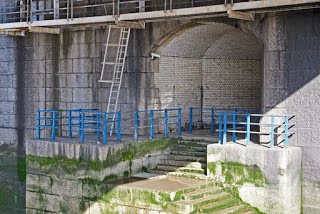
During construction of the bridge, planners thoughtfully incorporated a mortuary into the north pier of the bridge. Due to tidal currents in the river, bodies that ended up in that part of the Thames River due to accident, suicide or convenient disposal, tended to congregate along that part of the riverbank. The mortuary came to be known as Dead Man’s Hole.
Post-Mortem of Jakobs
On Friday 15 August, 1941, after Jakobs’ execution at the Tower of London, his body was transferred to the Tower Bridge Mortuary. Sir Bernard Spilsbury and East District Coroner W.R.H. Heddy performed the post-mortem on Jakobs. Jakobs’ body may have been stored in the mortuary until Monday, 18 April, 1941, when it was transferred to St. Mary’s Roman Catholic Cemetery (Kensal Green) for burial.
Tower Bridge Mortuary Today
The old mortuary can be accessed by a couple of routes. It is easily accessed from the east end of the north approach to the bridge (opposite Starbucks). In Google Streetview, one can see that there are two arches, one with a lamp-post and one with a large wooden doorway. The wooden doorway leads to the Tower of London promenade. The archway to the left, with the lamp-post leads to the mortuary (behind the fence in the background) and to the Tower Bridge steps.
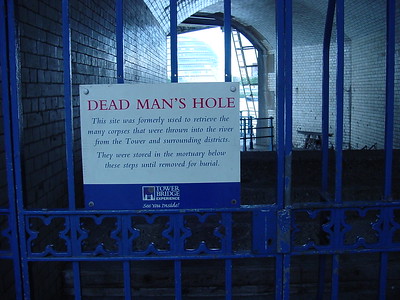
The entrance to the area around Dead Man’s Hole is sealed off from public access with a metal fence, on which is posted a sign which states:
“This site was formerly used to retrieve the many corpses that were thrown into the river from the Tower and surrounding districts. They were stored in the mortuary below these steps until removed for burial.”
The steps referred to in the sign are for access to the west side of the Tower Bridge and are located just to the right of the photograph. Within the fenced-off area, a wooden doorway with a metal grill above it (just visible on the right side of the photograph) gives access to the former mortuary.
Interestingly, on 28 October 2005, Most Haunted Live filmed an episode which included Tower Bridge and the old mortuary.
While overly dramatic (complete with an Ouija board), the programme does give a tour into the old mortuary. The programme is available in parts on Youtube. The first one is filmed outside the former mortuary and the second one is filmed inside the former mortuary.
Youtube – Most Haunted Live – Outside the mortuary (N.B. 2021 – link no longer works)
Youtube – Most Haunted Live – Inside the mortuary (N.B. 2021 – link no longer works)
A colleague of the crew took some photographs of the former mortuary during the day, a rare glimpse into a room not often seen.
Inside the Tower Bridge Mortuary
As one passes through the wooden doorway, one enters an antechamber with a set of stairs that lead down and to the left. At the base of the stairs is an archway (seen along the right side of the photograph) which leads to the main chamber of the mortuary. A pile of sacks lies on the floor near the archway.
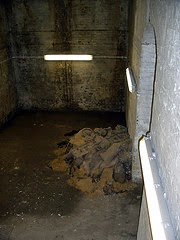
As one enters through the archway, into the main chamber of the old mortuary, one enters along the side of a long rectangular space. To the right of the archway is the angled underside of the Tower Bridge stairs.
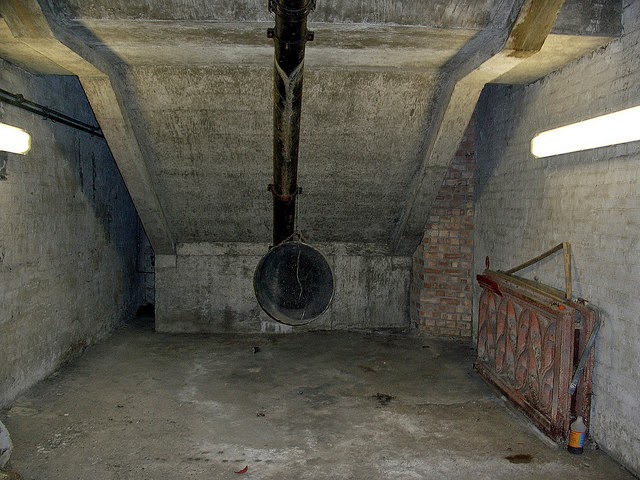
To the left of the archway, the chamber becomes much taller and includes some storage shelving.
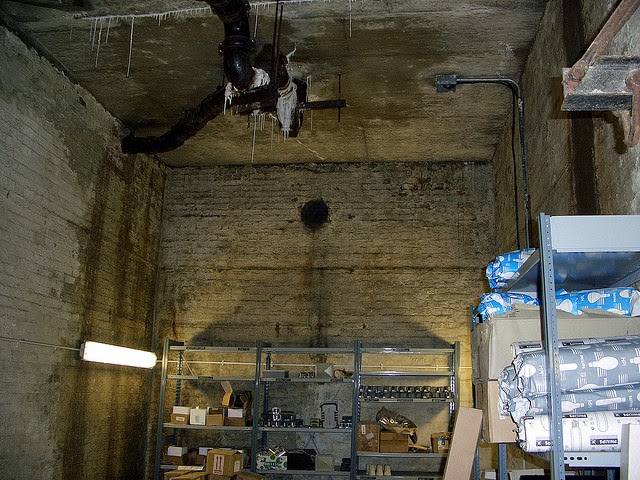
The mortuary chamber, used for such grim purposes in the past, is now a dank storage room filled with detritus.
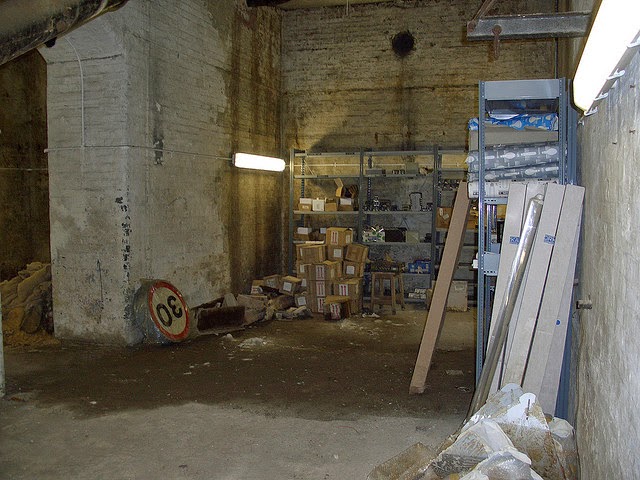
This series of photographs contrasts with a photograph taken in the mid 1970s by Winston Ramsey from After the Battle magazine. Ramsey’s photograph shows a boiler room which is clearly not the same as the images taken at the location under the Tower Bridge.
Artifact of A Macabre Past
On a side note, an astute blogger noticed an interesting artifact which may relate to the history of the old mortuary.
In Google Streetview, the old mortuary is located within the archway to the left. The archway to the right leads to the Tower of London shore promenade.
If one looks behind the large wooden door in the archway to the right, one finds a black cabinet against the wall.
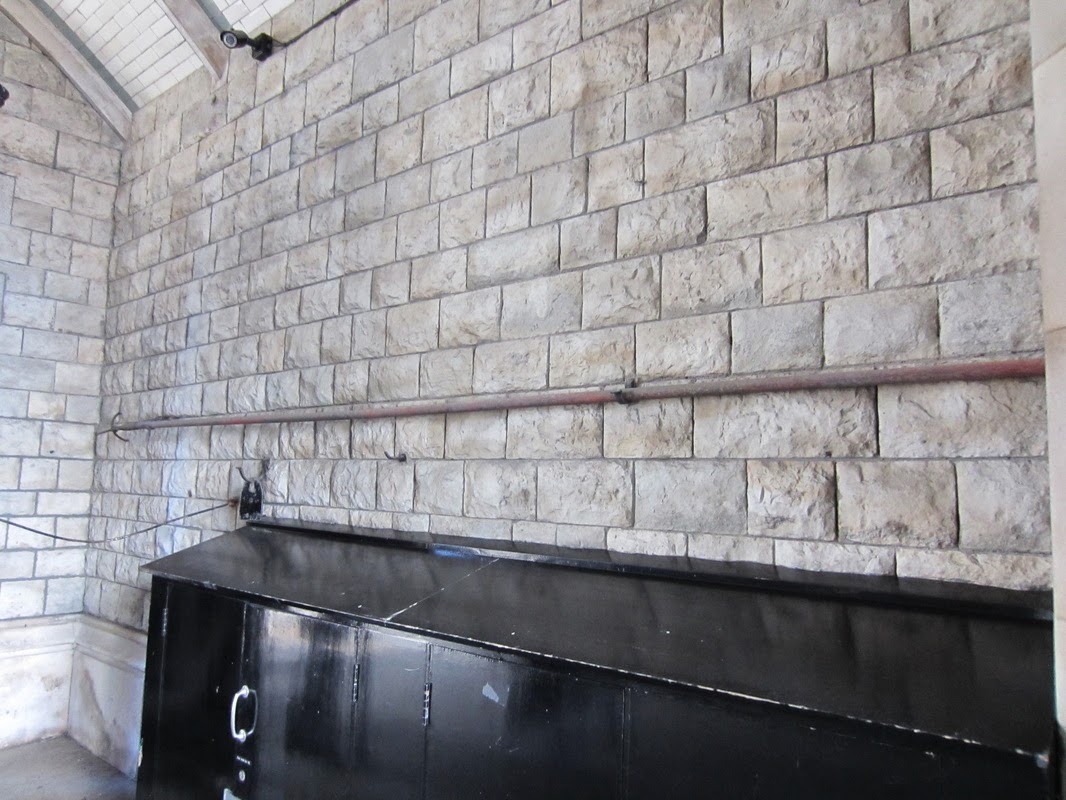
Above the cabinet is a long pole (about 8 feet in length) with a three-sided hook on the end of it. The blogger thought that the pole was perfectly suited for pulling bodies out of a river.
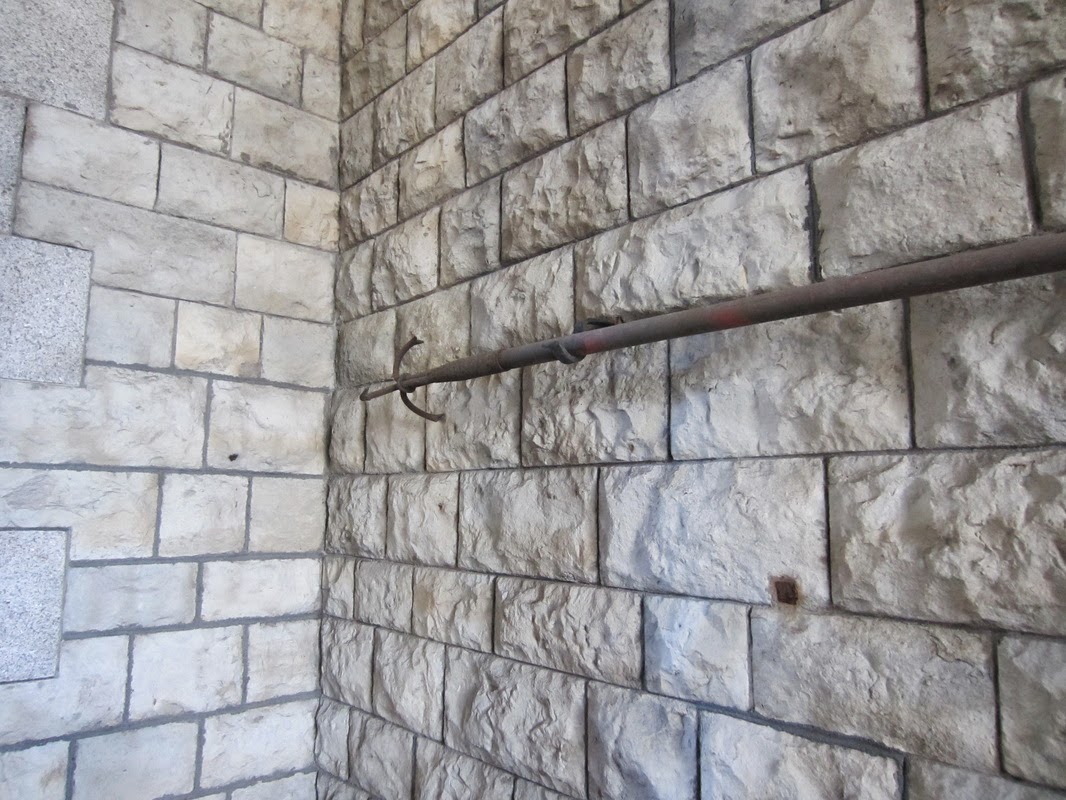
Josef was most likely not the last person to pass through the old Tower Bridge mortuary. He was however the last one to come via the Tower of London.
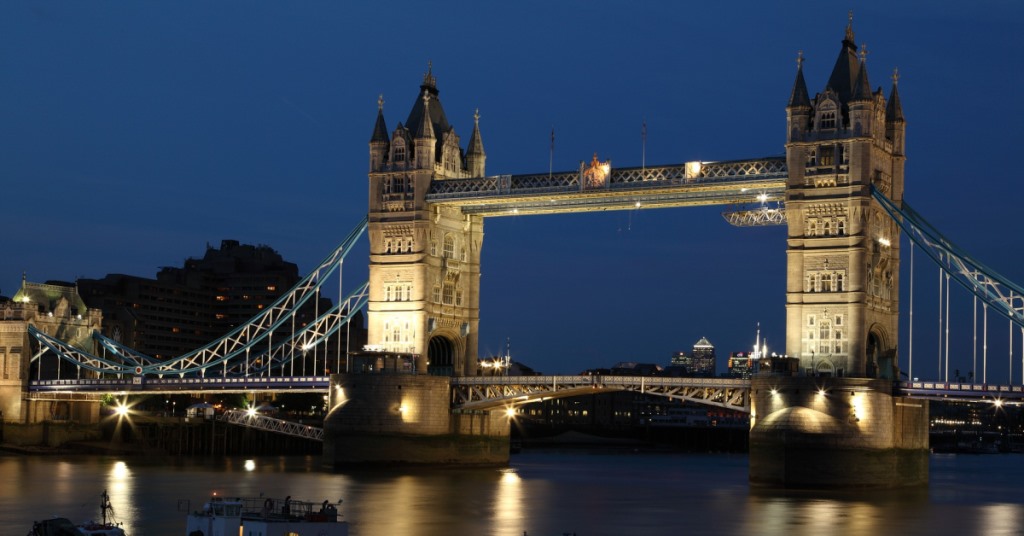
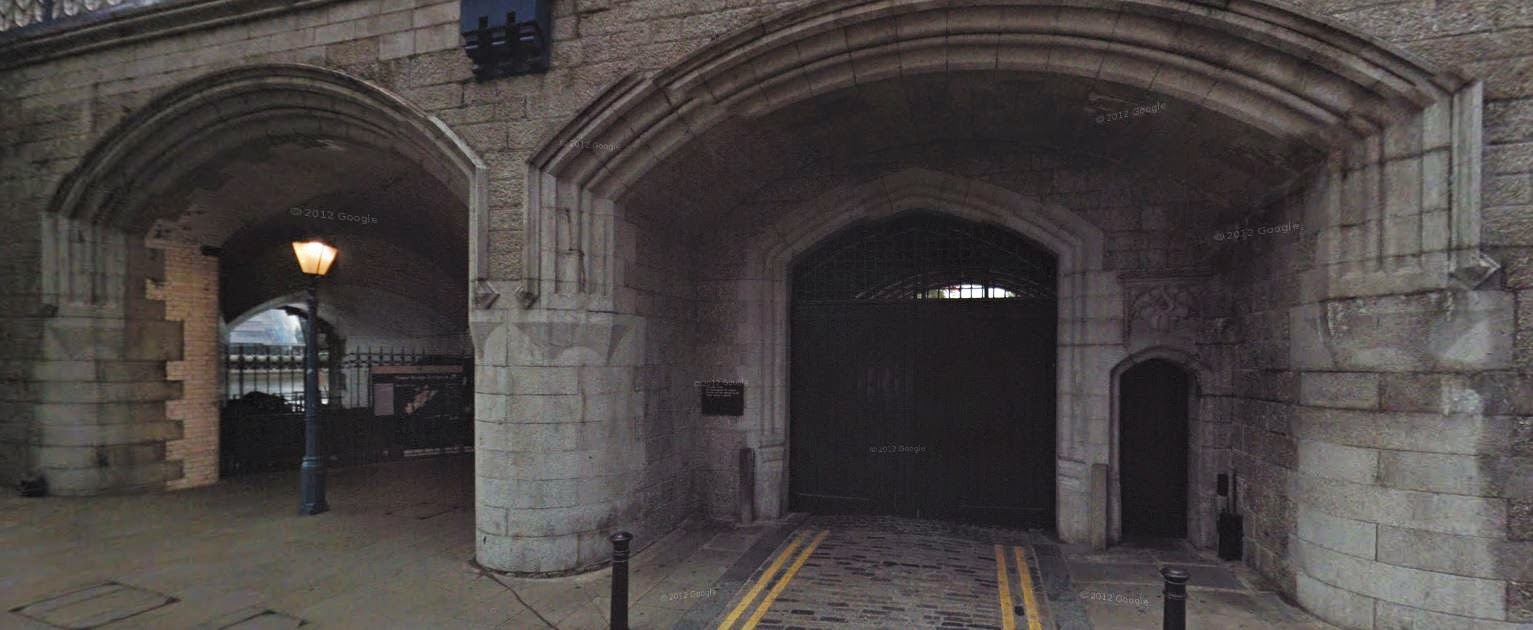

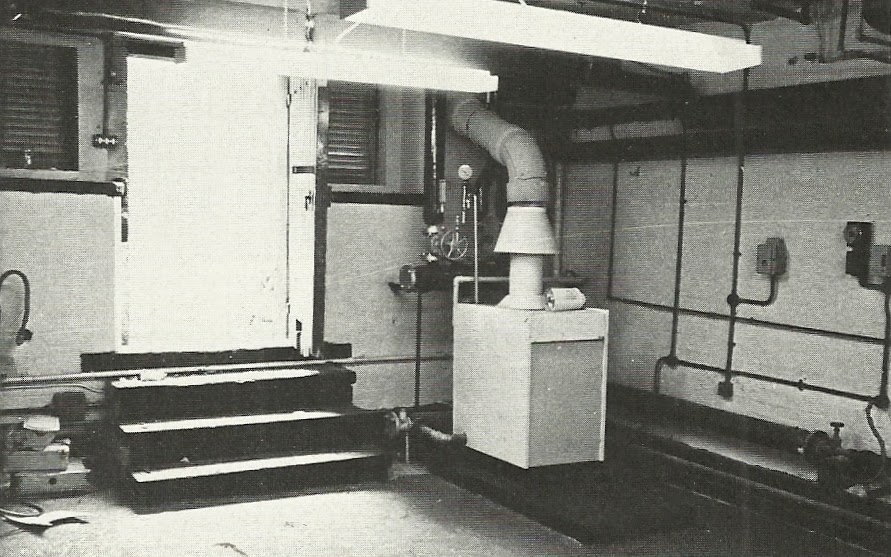
Hi , this is a fascinating article .
According to After the Battle magazine the autopsy took place in the mortuary within the walls of the Tower which is where they took their photo.
I am really intrigued by the whole story.
Hi John,
Thanks for the comment! Glad you enjoyed the article. I actually was taken on a tour of the mortuary in 1991 by Winston Ramsey, editor of After the Battle magazine. The governor of the Tower let us and it was quite spooky.
Best wishes,
Giselle
Hi Giselle
Many thanks for the reply. So just for my peace of mind , was the autopsy undertaken within the tower walls or under the bridge ?
I actually live in Peterborough so no distance at all from Ramsey so I’m planning on a visit to the landing site soon .
Kind regards
John
Hi John, make sure you stop in at the Ramsey Rural Museum – they have a piece of Josef’s parachute on display I think. The autopsy took place under the bridge. When Winston wrote the After the Battle article (#11) in the mid 1970s, he didn’t have a lot of information to go on. By the time we visited in 1991, more information had come to light. There is actually a fair bit of material in the ATB article that is no longer accurate. For example, the article said Josef had been held in the Tower on the night before his execution. He was actually held at Wandsworth Prison until about 5:30 am on the morning of his execution. It’s a fascinating story!
Best wishes,
Giselle
Hi Giselle
Many thanks for clarifying. I’ve just ordered a copy of your book , very much looking forward to reading it . I will definitely be visiting the Ramsey museum as soon as I can .
Thanks John! I had planned to visit the 1940s Ramsey Weekend in 2020 but… well… we all know how that turned out! I do hope to make it over, if not this year (unlikely) then hopefully next year. Would be happy to autograph the book for you if you like.
Best wishes,
Giselle
Hi Giselle,
That would be awesome ! I last went to the weekend about 20 years ago , it was a lot of fun .
Best wishes
John
Pingback: 12 Surprising Facts And Things To Spot On Tower Bridge! - Living London History
Thanks. Checked out your site and don’t see any interior pics of the mortuary.